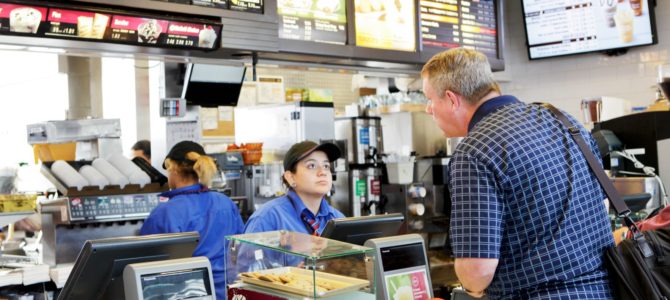
- Home
- Crunchtime Blog
- How Two Leading Burger Chains Empower Field Users to Drive Change

How Two Leading Burger Chains Empower Field Users to Drive Change
With billions of burgers served worldwide each year, brands are always looking for ways to stand out from the crowd and keep customers coming back for more. It starts with equipping your teams to deliver great experiences consistently and empowering them with the right processes and standards to do so.
When implementing an operations execution tool, or when making any kind of change to a process, it is crucial to empower field users to drive that change. Without proper change management, a large deployment can quickly go off track, and while this can be a difficult process, there are a variety of ways to achieve success.
Beth Brewer, Executive Vice President of Burgerville, and Roger Casias, Manager and Restaurant Operations Product Owner of Whataburger, joined Crunchtime’s Anika Smith during Crunchtime’s Ops Summit to discuss ways they had been able to empower field users to drive change while implementing Zenput, Crunchtime’s Operations Execution platform.
Established in 1961, Burgerville is an innovative and industry-leading restaurant company with 39 locations throughout Oregon and Southwest Washington. Nearly 1,400 employees strong, Burgerville provides guests fresh, great-tasting food all day every day from breakfast to late-night snacks based in its mission “serve with love.” At Burgerville, the commitment to fresh, local and sustainable values is about helping people and communities thrive.

Over six decades ago, an adventurous and determined entrepreneur named Harmon Dobson had a bold idea: to serve a burger so big that it took two hands to hold, and so good that after a single bite customers couldn't help but exclaim, “What a burger!” He named his humble burger stand, located on Ayers Street in Corpus Christi, Texas, “Whataburger.” Each and every Whataburger is still made to order—when it's ordered. Customers are greeted with a smile 24 hours a day, seven days a week at nearly 800 Whataburger restaurants from Arizona to Florida.

One method that helped Burgerville increase user engagement was to use contests as incentives. Beth noted that when Zenput was first implemented, some employees were hesitant to engage with the content as much as Burgerville had hoped. They were able to quickly remedy this by holding contests to incentivize completion of the checklists and templates. Two specific forms of contests that were particularly effective were bingo games and raffles. These friendly competitions provided a great incentive for the users to become accustomed to routinely using the new interface.
When asked what the first few weeks of deployment were like, one tip Beth pointed to was utilizing a variety of feedback forms. These forms allowed them to quickly diagnose what wasn’t working and rectify the situation before it became a larger problem. Beth spoke about how these forms were useful in reducing tension between departments, as they can be used to clearly explain where an issue is occurring, whereas, in the past, it may have remained more ambiguous without clear communication. This lack of communication would occasionally lead to otherwise preventable conflict, and the feedback forms offered the perfect medium for effective communication to occur. Beth explained, “We really wanted the restaurants to be successful, so we started coming back to the home office and saying, Hey, what if we made a form here? And then they just know to look, is there a form for this? And it gives them all the things to fill out. So a lot of friction started to dissipate between the departments and the restaurants.”
One key factor to keep in mind when implementing any new tool is to be judicious about how much you are putting on each user’s plate. For example, overwhelming users with too many checklists can negatively impact engagement by creating burnout and reducing the overall effectiveness of the implementation. Instead, prioritize which checklists actually need to be done by which users. Roger offered, “We wanted to make sure that what we were putting into the restaurants makes sense for them. We're not the end user, so think about who the end user is. And if for them, it is not friendly enough, you're not going to get the right information back. Because a lot of times what we have found is that we're trying to ask the restaurants to do so many different things from so many different departments, and it doesn't make sense. If we're asking the restaurant to complete X amount of forms a day, we're not going to continue to add more and more, because then, to them, it's going to turn into a compliance thing.”
Using these strategies employed by Burgerville and Whataburger, you can drive change among field users and ensure as smooth an implementation process as possible. Click here to learn more about Zenput and how its functions could elevate your business.
Share this post
Related


Meet the Leaders Driving Ops Excellence at Burger King, Culver’s, and Chipotle


